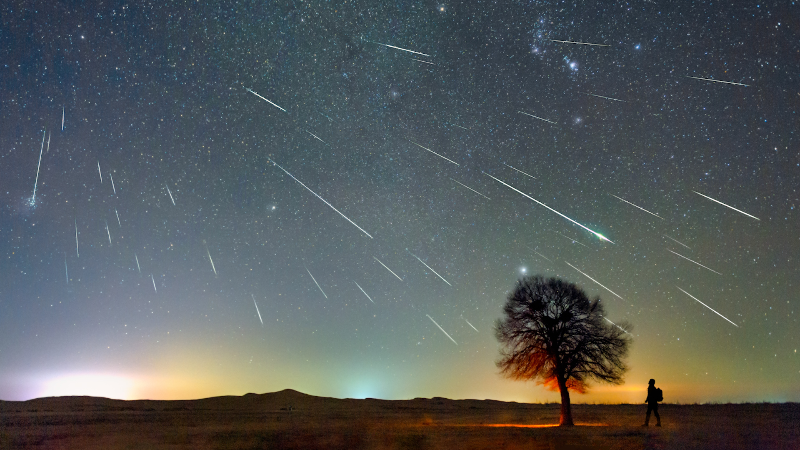Aquarids meteor shower viewing alert: When and where to see shooting stars
The Aquarids – sometimes spelled as "Aquariids" – first became active April 19 and are due to peak between May 5 and May 6.

The Aquarids, a meteor shower famous for its speedy balls of space debris that streak across the night sky, is due to peak in early May.
The ETA Aquarids reliably becomes most active around early May each year as Earth passes through debris left by the famous Halley's comet. Taking place right on the heels of the Lyrid meteor shower, the Aquarids – sometimes spelled as "Aquariids" – are also the last opportunity to catch a meteor shower for a few months before the next one peaks in late July.
The Aquarids meteors don't produce bright flashes known as fireballs, but they are famous for being fast and leaving spectacular glowing trails in their wake.
Here's everything to know about the ETA Aquarids meteor shower and how to see it in 2025:
When does the ETA Aquarids meteor shower peak?
The Aquarids, which first became active April 19, are due to peak between May 5 and May 6 as Earth passes through the densest part of Halley's cosmic debris, according to the American Meteor Society. While the meteors won't be as bright or dazzling after the peak, stargazers could still catch some up until about May 28.
The Aquarids are the third major meteor shower of the year, following the Lyrids earlier in April and the Quadrantids in January.
What time can I see the Aquarids meteors?
Like all meteor showers, the Aquarids are best viewed during the dark hours between midnight and dawn.
The website Time and Date also provides detailed information about where and when to see the phenomenon.
How to see the Aquarids
The Aquarids should pretty much be visible around the globe anywhere in the sky – assuming clouds and a bright moon don't obscure the view.
However, the meteors are best seen from the Southern Hemisphere. That's because the meteors seem to emerge – or radiate – from the constellation Aquarius, which is higher up in the sky in the Southern Hemisphere than it is in the Northern Hemisphere.
In the Northern Hemisphere, ETA Aquarid meteors appear as what NASA refers to as "Earthgrazers" – or long meteors that appear to skim the surface of the Earth at the horizon.
Getting away from city light pollution and street lights will also help to unveil the best sights.
How many meteors will be visible per hour?
Aquarids meteors whiz across the sky at up to about 40.7 miles per second. That's fast enough to leave a glowing trail of debris behind that can last for several seconds or even multiple minutes, according to NASA.
If conditions are right, up to about 50 meteors can be seen per hour during the shower's peak.
But north of the equator, the meteor shower typically produces no more than 10 to 30 meteors per hour.
What causes a meteor shower? Is a meteor a shooting star?
Meteor showers occur when Earth passes through dusty debris trails left by comets and other space objects as they orbit the sun. The debris – space rocks known as meteoroids – collides with Earth's atmosphere at high speed and disintegrates, creating fiery and colorful streaks in the sky, according to NASA.
The striking celestial sight, which are often colloquially referred to as "shooting stars," are meteors. If meteoroids survive their trip to Earth without burning up in the atmosphere, they are called meteorites, NASA says.
The Aquarids' parent comet is perhaps the most famous one of them all: Halley’s Comet.
Halley, which takes about 76 years for each orbit of the sun, won't be seen again by casual observers until 2061 after it was last sighted in 1986.
But despite its rare appearance to us here on Earth, Halley's impact is still felt at least twice a year when we enter its debris path. Each time Halley returns to the inner solar system, its nucleus sheds ice and rocky dust into space that eventually becomes not only the ETA Aquarids in May, but the Orionids every October.
When is the next meteor shower?
Up next, both Southern delta Aquarids and the alpha Capricornids are due to peak at the same time between July 29 and July 30, according to the American Meteor Society.
The Capricornids begin their activity July 12, followed by the Southern delta Aquarids on July 18. Both meteor showers will remain active until Aug. 12.
Eric Lagatta is the Space Connect reporter for the Paste BN Network. Reach him at elagatta@gannett.com